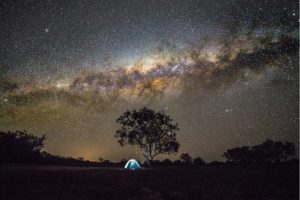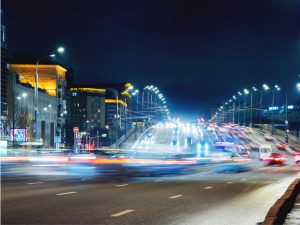The electric light bulb is undoubtedly one of the greatest inventions of all time. From allowing us to work, study and play at night to making our homes safer, this simple yet powerful creation has had an enormous impact on global society. But it is proving to be a Faustian bargain. Artificial lighting at night has become a global environmental pollutant with negative impacts on human well-being, biodiversity, climate change and cultural heritage. Yet light pollution is still not perceived as a threat by the general public and has received relatively little attention from environmental scientists.
Blotting out the stars
Today, more than 80% of the world’s population and 99% of people in Europe and North America live under skyglow, the artificial illumination of the night sky caused by human-created light scattering in the atmosphere and returning to Earth. The Milky Way is hidden from more than a third of humanity. The New World Atlas of Night Sky Brightness, a computer-generated map based on thousands of satellite images, shows that there are few areas of complete night-time darkness left in Europe. Martin Rees, the UK’s Astronomer Royal, says: “It is indeed a sad deprivation that many young people have never seen a clear starry sky. And it’s important that it’s not just astronomers who care about this.”

And the problem appears to be rapidly getting worse. According to a study by the German Research Centre for Geosciences in Berlin published in Science in 2023, “the average night sky got brighter by 9.6% per year from 2011 to 2022, which is equivalent to doubling the sky brightness every eight years.” Data from weather satellites had previously estimated the average annual increase in brightness at 2%, but their instruments cannot detect horizontally shining light such as illuminated signs, a major contributor to skyglow, nor are they sensitive to the blue part of the spectrum. As a result, satellites have missed the trend over the past decade of cities transitioning from yellow sodium vapour streetlights to energy-efficient but bluer light-emitting diodes (LEDs).
Blue light disrupts sleep
But the switch to LED streetlights may not actually result in significant energy savings or reductions in greenhouse gas emissions. Paradoxically, as outdoor lighting has become cheaper and more efficient, many cities and businesses have installed more of it, offsetting any energy savings, an example of the rebound effect. Photos taken by European astronauts aboard the International Space Station over the last two decades show a clear expansion of illumination in urban areas and a shift towards whiter and bluer LED emissions.

All that blue light comes at a cost. According to the American Medical Association, “high-intensity LED lighting designs emit a large amount of blue light that appears white to the naked eye and create worse night-time glare than conventional lighting.” But beyond reduced visual acuity for drivers, “blue-rich LED streetlights operate at a wavelength that most adversely suppresses melatonin during night. It is estimated that white LED lamps have five times greater impact on circadian sleep rhythms than conventional streetlamps.”
The Harvard University article Blue light has a dark side explains that “blue wavelengths—which are beneficial during daylight hours because they boost attention, reaction times, and mood—seem to be the most disruptive at night.” Research suggests that exposure to artificial light at night, particularly the blue-violet light produced by LEDs, falsely signals to our bodies that it is daytime, disrupting our circadian rhythms—the biological clocks that keep time in our bodies. The result is a higher incidence of mental health problems, diabetes, heart disease, obesity, Alzheimer’s and some cancers.
Light pollution harms wildlife
But it is not just humans who suffer the effects of light pollution. Plants and animals rely on the Earth’s diurnal rhythm of light and dark to orchestrate life-sustaining behaviours such as reproductive cycles, feeding and sleeping patterns, and defence against predators. Studies show that exposure to artificial light has adverse and deadly consequences for a wide range of species, including amphibians, reptiles, birds, mammals, insects, fish, crustaceans, coral reefs and trees and plants. Migratory birds are particularly affected by artificial lighting, and millions die each year as a result of being confused by lights and becoming lost or colliding with brightly lit buildings.

Tackling the growing challenge of light pollution requires a combination of individual actions, community engagement and policy changes. Some progress has been made, with countries such as France, Germany and Mexico enacting laws to curb light pollution. Dark Sky International promotes responsible outdoor lighting and works to certify communities, parks and protected areas around the world that preserve and protect dark sites. Yet raising awareness of the problem remains paramount, as it often languishes on the sidelines of the global environmental agenda, despite its profound impact on our personal relationship with the night sky—a cherished facet of our shared global natural heritage.
Comments on this publication